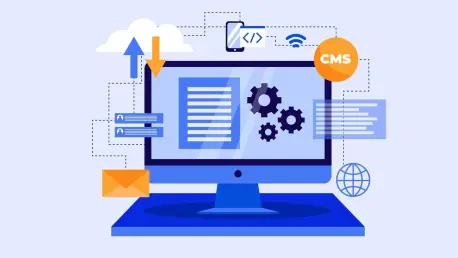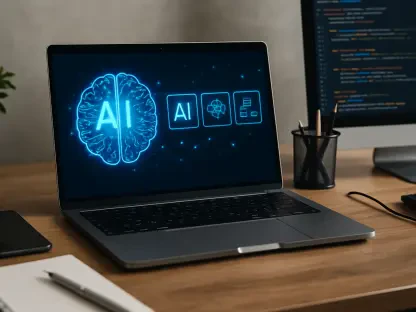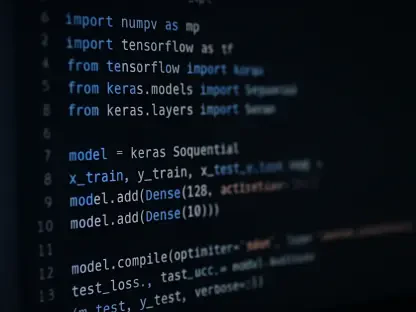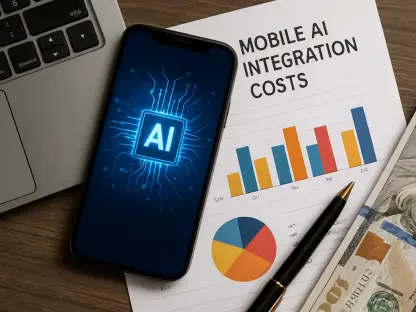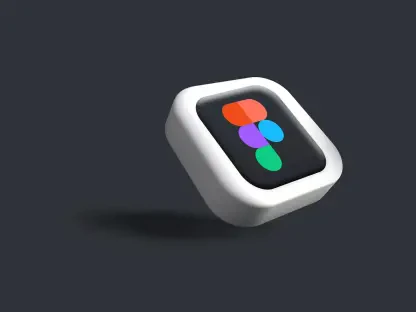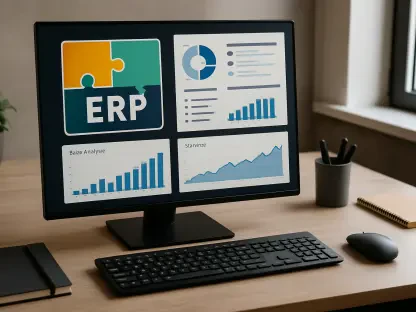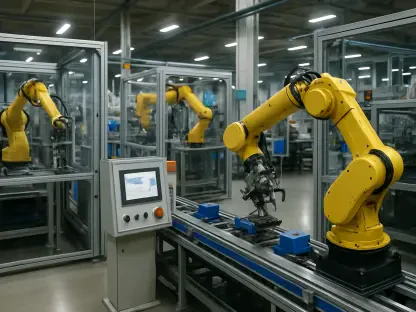Imagine a digital landscape where content flows effortlessly across websites, mobile apps, and even voice assistants, adapting to each platform without the need for redundant effort or complex redesigns. In today’s fast-paced tech environment, businesses face the challenge of delivering consistent, personalized experiences to diverse audiences through multiple channels. Headless CMS technology has emerged as a game-changer, decoupling content from presentation to enable unparalleled flexibility. This review dives deep into the capabilities of headless CMS integration, exploring its core features, recent innovations, real-world applications, and the hurdles it faces. The aim is to provide a clear picture of how this technology reshapes digital content strategies and whether it lives up to the hype in modern web development.
Unpacking the Concept of Headless CMS
At its core, headless CMS represents a shift from traditional content management systems by separating content storage and management from the frontend display. This decoupled architecture relies on APIs to deliver content to any platform, be it a website, app, or smart device, without dictating how it should be rendered. Such a setup offers developers the freedom to craft tailored user interfaces while content teams focus on creating and organizing material independently. This fundamental design addresses the growing demand for agility in a world where digital touchpoints continue to multiply.
The transition from conventional CMS to headless systems stems from the need for scalability and adaptability. Traditional platforms often lock content into rigid templates, making it cumbersome to support diverse channels or modern frontend frameworks. Headless CMS, by contrast, empowers teams to build experiences using tools like React or Vue, ensuring content remains portable and reusable. Its rise aligns with the trend toward component-based design, where modular elements drive both development and content structuring.
This technology holds a pivotal place in the current tech ecosystem. With businesses prioritizing omnichannel strategies, headless CMS provides the backbone for consistent delivery across disparate platforms. Its relevance is underscored by the increasing reliance on dynamic, interactive user experiences that demand flexible content handling. As digital transformation accelerates, understanding this system becomes essential for staying competitive.
Key Aspects of Headless CMS Integration
Modular Design Through Structured Content Blocks
One of the standout features of headless CMS integration lies in structured content blocks, which facilitate a modular approach to content creation. These blocks are designed to correspond directly with frontend UI components, ensuring that content fits seamlessly into the intended design. For instance, a block for a product card can include predefined fields like title, image, and description, mirroring the visual element it populates.
This modularity brings significant advantages in terms of consistency and efficiency. Content creators can reuse blocks across different pages or projects, reducing duplication while maintaining a uniform look and feel. Additionally, it speeds up page assembly as editors can stack and rearrange blocks without needing technical expertise, streamlining workflows between design and content teams.
The alignment of content models with design systems further enhances productivity. By mapping content structures to UI requirements, discrepancies are minimized, allowing for smoother collaboration. This synergy not only boosts usability but also supports scalable content strategies, making it easier to adapt to new design trends or platform needs over time.
API-Driven Content Distribution
Another critical feature is the API-driven nature of headless CMS, which enables content delivery to a wide array of endpoints. Whether it’s a desktop browser, a mobile application, or an emerging interface like a smart speaker, APIs ensure content is accessible in real-time, tailored to each platform’s specifications. This capability is central to executing effective omnichannel strategies.
Performance-wise, API integration offers scalability and responsiveness. Content updates can be pushed instantly across all channels, ensuring users always see the latest information. This is particularly valuable for time-sensitive campaigns or breaking news scenarios where immediacy is key. Moreover, the system can handle high traffic volumes without compromising speed, supporting growth in user bases.
Practical examples illustrate this flexibility in action. A retail brand might use a headless CMS to serve product descriptions to both its e-commerce site and a partnered mobile app, adjusting formats based on device constraints. Such adaptability highlights how API-driven delivery empowers businesses to meet diverse audience needs without overhauling their content backend.
Cutting-Edge Developments in Headless CMS
The field of headless CMS continues to evolve with innovations that push the boundaries of digital content management. Integration with composable architectures stands out, allowing businesses to mix and match tools for a customized tech stack. This modular approach supports greater agility, letting teams adopt best-in-class solutions for specific needs like analytics or commerce.
Emerging trends also include AI-powered personalization, where content is dynamically tailored to user preferences, and headless commerce solutions that streamline online shopping experiences. Additionally, there’s a growing emphasis on user-friendly interfaces for editors, such as real-time previews that bridge the gap between content input and final output. These advancements make the technology more accessible to non-technical staff.
Industry adoption reflects these shifts, with global brands increasingly leveraging headless CMS for tasks like localization and dynamic rendering. The focus on delivering region-specific content or adapting to user behavior in real-time showcases how the technology meets complex demands. As these trends gain traction, headless CMS is becoming a cornerstone for enterprises aiming to stay ahead in digital innovation.
Practical Implementations Across Industries
Headless CMS integration is making waves across various sectors, transforming how content reaches end users. In e-commerce, it enables retailers to craft personalized shopping experiences by delivering targeted promotions across websites and apps. This adaptability helps drive conversions by ensuring relevance to individual customer behaviors and preferences.
In the media industry, the technology supports rapid content deployment for news outlets managing breaking stories across multiple formats. Similarly, educational platforms benefit by offering consistent learning materials on web and mobile interfaces, catering to students in diverse settings. These applications demonstrate the versatility of headless CMS in addressing sector-specific challenges.
Notable case studies further underline its impact. Platforms like Storyblok have been instrumental for organizations seeking to enhance collaboration between editorial and development teams. By using headless CMS to manage multilingual content for global audiences, companies achieve streamlined operations, ensuring that translations and cultural nuances are handled efficiently at scale.
Obstacles in Adopting Headless CMS
Despite its strengths, integrating headless CMS comes with notable challenges. Technically, aligning content models with frontend components can be complex, requiring meticulous planning to avoid mismatches that disrupt user experiences. Ensuring performance under heavy loads also demands robust infrastructure, which can strain resources if not managed properly.
Market-related barriers include the learning curve for content editors accustomed to traditional systems. Transitioning to a headless setup often involves retraining staff and rethinking workflows, which can incur significant costs and time. Smaller organizations, in particular, may find the initial investment daunting compared to familiar monolithic platforms.
Efforts to address these issues are underway, with improved documentation and user training programs becoming more common. Tools for schema validation help enforce design rules, reducing errors during content entry. These initiatives aim to lower the entry barrier, making headless CMS a viable option for a broader range of users and businesses.
What Lies Ahead for Headless CMS
Looking forward, headless CMS technology promises deeper integration with artificial intelligence to optimize content creation and delivery. AI could analyze user data to suggest or even generate content variations, enhancing personalization at scale. Such advancements would further cement its role in crafting bespoke digital interactions.
Broader adoption across emerging touchpoints, like augmented reality interfaces or IoT devices, is also on the horizon. As digital ecosystems expand, the need for content that adapts effortlessly to new environments will grow, positioning headless CMS as a critical enabler. Anticipated tools for non-technical users could democratize access, allowing more stakeholders to contribute directly.
The long-term impact on industries points toward fully composable digital frameworks prioritizing agility. Businesses will likely shift to ecosystems where components, including content management, interoperate seamlessly. This evolution suggests a future where headless CMS underpins scalable, innovative strategies, reshaping how digital experiences are conceptualized and delivered.
Final Thoughts on Headless CMS Integration
Reflecting on this exploration, headless CMS integration proves to be a powerful tool for enhancing collaboration and scalability in digital content delivery. Its strengths in modularity and omnichannel capabilities stand out as transformative, though challenges like editor onboarding require attention. The technology demonstrates significant potential to redefine web development practices across various sectors.
Moving forward, organizations should prioritize robust training programs to ease the transition for content teams, ensuring smoother adoption. Exploring partnerships with platforms offering intuitive interfaces could also mitigate usability concerns. Additionally, investing in scalable infrastructure from the outset is essential to handle future growth, positioning businesses to leverage the full spectrum of headless CMS benefits in their digital journeys.
